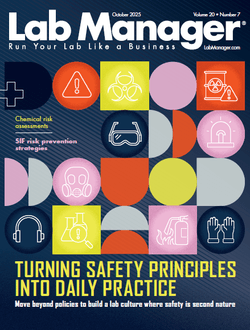Progressive companies will shift to recovery mode before rivals by tracking the key leading indicators and developing a strategic plan
If the global recession has been the greatest challenge to face executives in decades, then the upcoming global recovery will be the greatest opportunity.
During the recovery, customers will be buying again for the first time since the recession began. Acting swiftly and decisively can help you capture their business and secure your industry leadership in the next business cycle.
The recovery will present a unique set of strategic challenges. Marketing, products, and prices must be targeted at customers when they are ready to pay for features again, but move too soon and your premium products will sit on the shelves. Similarly, production and supply chain capacity must expand to meet increasing demand. Do this too early and fixed costs will drag down your profitability. But, move too late and your customers will spend their new wealth with your competitors. The key is to synchronize your strategy with the business cycle.
In fact, Corporate Executive Board research indicates that the number of companies moving up or down in industry rankings more than doubles during the recovery before returning to normal levels in the subsequent months.
The Right Signals
How do you time these decisions? Many need to be made well in advance, and the end of a recession is often recognized only months after the fact—too late to gain a large competitive advantage. The most progressive firms will turn to recovery mode before competitors by tracking the correct leading indicators and developing a recovery plan right now.
Your shortlist of leading indicators toward a recovery should include the statistic known as months' supply of new homes for sale. While no one metric is foolproof, housing supply has a strong track record of rising in advance of recessions and falling in advance of recoveries. The underlying economic logic of this pattern holds true today.
Our analysis of U.S. historical data reveals that when housing inventory falls to nine months' supply, there is an almost 40% chance of a recovery three months later. It looks as if there's plenty of time to wait. The most recent data released by the Census Bureau indicates that there was a 12.2 months' supply of new homes for sale in February. While this is down from the all-time high set in January, the housing market still has a long way to go before returning to normal. But that doesn't mean that your only option is to wait, cut costs, and hope for the best.
Begin developing a plan for the recovery now. It falls to the strategic thinkers in any company to look beyond the present challenges and prepare for opportunities over the horizon. Updated data on most leading indicators (including housing inventory) are released with a one-month lag, so once the data indicate a recovery is imminent, you'll have two months to put your plan into action. Spend an hour listing everything you would do if you knew the recovery would come in two months, and then work to finalize a more complete plan. Doing so will allow you to act immediately when the recovery comes and your competitors are still deliberating.
Eyes on the Future
Construct a dashboard of key macroeconomic leading indicators, particularly housing inventory. Set thresholds for each based on historical trends in previous recessions so that you know what each metric is signaling. Consider supplementing these macroeconomic variables with industry- and company-specific leading indicators, examining how your customers have behaved during and just before past recoveries. Revise your plan monthly until these trip wires suggest it is time to implement.
Your plan should also include a manageable but comprehensive set of key, uncertain assumptions underpinning your recovery strategy. In these volatile times, environmental changes can quickly render any strategy obsolete. Your ability to course correct will depend on how quickly you recognize these changes.
Arrange the action steps in your plan so that you can learn from your initial forays at minimal cost, confirming or disproving these assumptions before moving on to riskier moves. For example, to test your customers' receptiveness to a new premium feature, select a pilot product and prepare to run it at the first hint of a business cycle turn. Make sure that you are in a position to learn as much from the experience as possible, but also that it can fail fast and cheap. If the results of the pilot suggest that your customers are ready to pay for these features, it will be better confirmation than any leading indicator that it is time to shift your strategy more broadly.
In the midst of this once-in-a-generation recession, it's easy to lose sight of the future and focus solely on surviving the present. But small investments of time now can pay off handsomely when the recession eventually ends, allowing you to capture an outsize share of the recovery's growth and position your firm for leadership for years to come.
Progressive companies will shift to recovery mode before rivals by tracking the key leading indicators and developing a strategic plan
If the global recession has been the greatest challenge to face executives in decades, then the upcoming global recovery will be the greatest opportunity.
During the recovery, customers will be buying again for the first time since the recession began. Acting swiftly and decisively can help you capture their business and secure your industry leadership in the next business cycle.
To continue reading this article, sign up for FREE to

Membership is FREE and provides you with instant access to eNewsletters, digital publications, article archives, and more.










